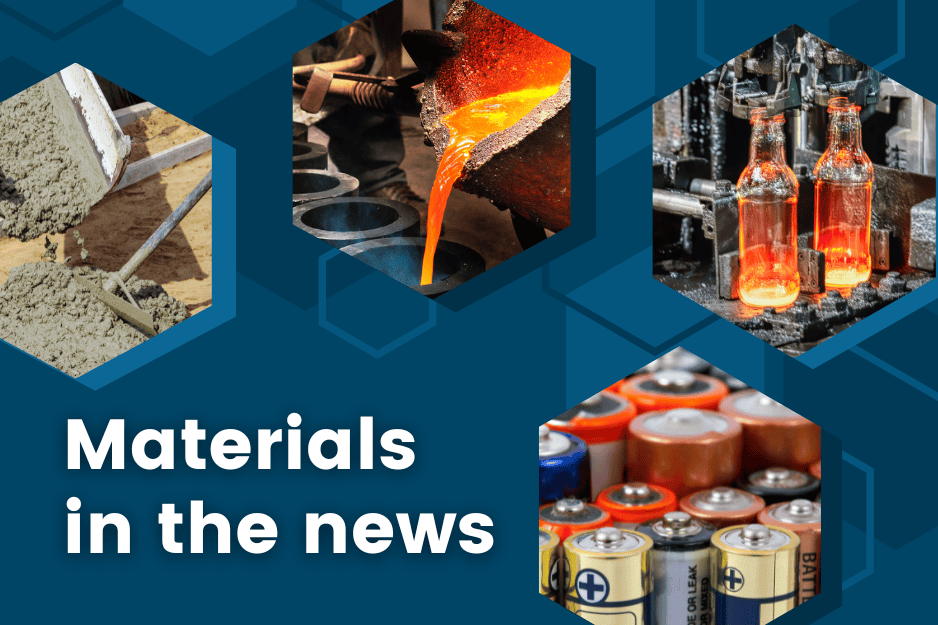
[Images above] Credit: NIST
NANOMATERIALS
Researchers print, tune graphene sensors to monitor food freshness, safety
Iowa State University and Northwestern University researchers used high-resolution printing technology and the unique properties of graphene to make low-cost biosensors to monitor food safety and livestock health.
Researchers control elusive spin fluctuations in 2D magnets
Cornell University researchers developed a new real-time imaging technique that is fast and sensitive to let researchers control the fluctuations and switch magnetism in 2D magnets via a “passive” mechanism that could eventually lead to more energy-efficient magnetic storage devices.
Researchers at the University of Texas at Austin and the University of Lille developed an analogue switch made from 2D hexagonal boron nitride. The device, configured in a metal-insulator-metal sandwich on a diamond substrate, can transmit multiple HDTV streams at a frequency of 100 GHz.
World’s widest graphene nanoribbon promises the next gen of miniaturized electronics
A new collaborative study by the Japan Science and Technology Agency reports the first ever 17-carbon wide graphene nanoribbon and confirms it has the smallest bandgap seen to date among known graphene nanoribbons prepared by a bottom-up manner.
ENVIRONMENT
Boron nitride destroys PFAS ‘forever’ chemicals PFOA, GenX
Rice University chemical engineers found boron nitride destroyed perfluorooctanoic acid—a “forever” chemical—at a faster clip than any previously reported photocatalyst. They have filed patents on the discovery.
MANUFACTURING
Making plastic more transparent while also adding electrical conductivity
Researchers at the University of Michigan made plastic conductive while also making it more transparent by creating a three-layer anti-reflection surface consisting of a conductive metal layer sandwiched between two dielectric materials that allow light to pass through easily. The dielectrics chosen by the team in this case are aluminum oxide and zinc oxide.
Researchers at the University of Tsukuba used computer calculations to design a new carbon-based material even harder than diamond. This structure, dubbed “pentadiamond,” contained a mixture of carbons featuring sp3 and sp2 hybridization.
OTHER STORIES
Tabletop quantum experiment could detect gravitational waves
University College London, University of Groningen, and University of Warwick researchers proposed a mid-frequency gravitational wave detector based on quantum technology that is 4,000 times smaller than detectors currently in use. It would use nanoscale diamond crystals placed in a quantum spatial superposition using Stern-Gerlach interferometry.
New chemistry for ultra-thin gas sensors
Ruhr-University Bochum researchers developed a new fabrication process for zinc oxide layers that can be used for nitrogen oxide sensors. The unique aspect of the new process is that it can be performed at very low process temperatures, thus facilitating deposition onto plastics as well.
Researchers crack superhard material puzzle from the ‘60s
Skolkovo Institute of Science and Technology researchers, together with industrial colleagues and academic partners, solved a puzzle about the crystal structure of a superhard tungsten boride that has extremely useful industrial applications. They showed the long-debated WB4 and the newly predicted WB5 are actually the same material.
New insights into van der Waals materials found
Researchers at The Pennsylvania State University and SLAC National Accelerator Laboratory provided new insights into the interactions of layered van der Waals materials using laser and electron beams. One of the interesting observations in their work is the breaking of Friedel’s Law, a law that applies to all material systems.
Quantum fluctuations can jiggle objects on the human scale
Physicists working on the LIGO gravitational-wave observatory in the U.S. showed quantum-scale correlations can leave their mark on macroscopic objects weighing tens of kilograms, such as LIGO’s 40-kilogram mirrors. This knowledge could boost the future rate of discoveries with such observatories.
Author
Lisa McDonald
CTT Categories
- Weekly Column: “Other materials”
